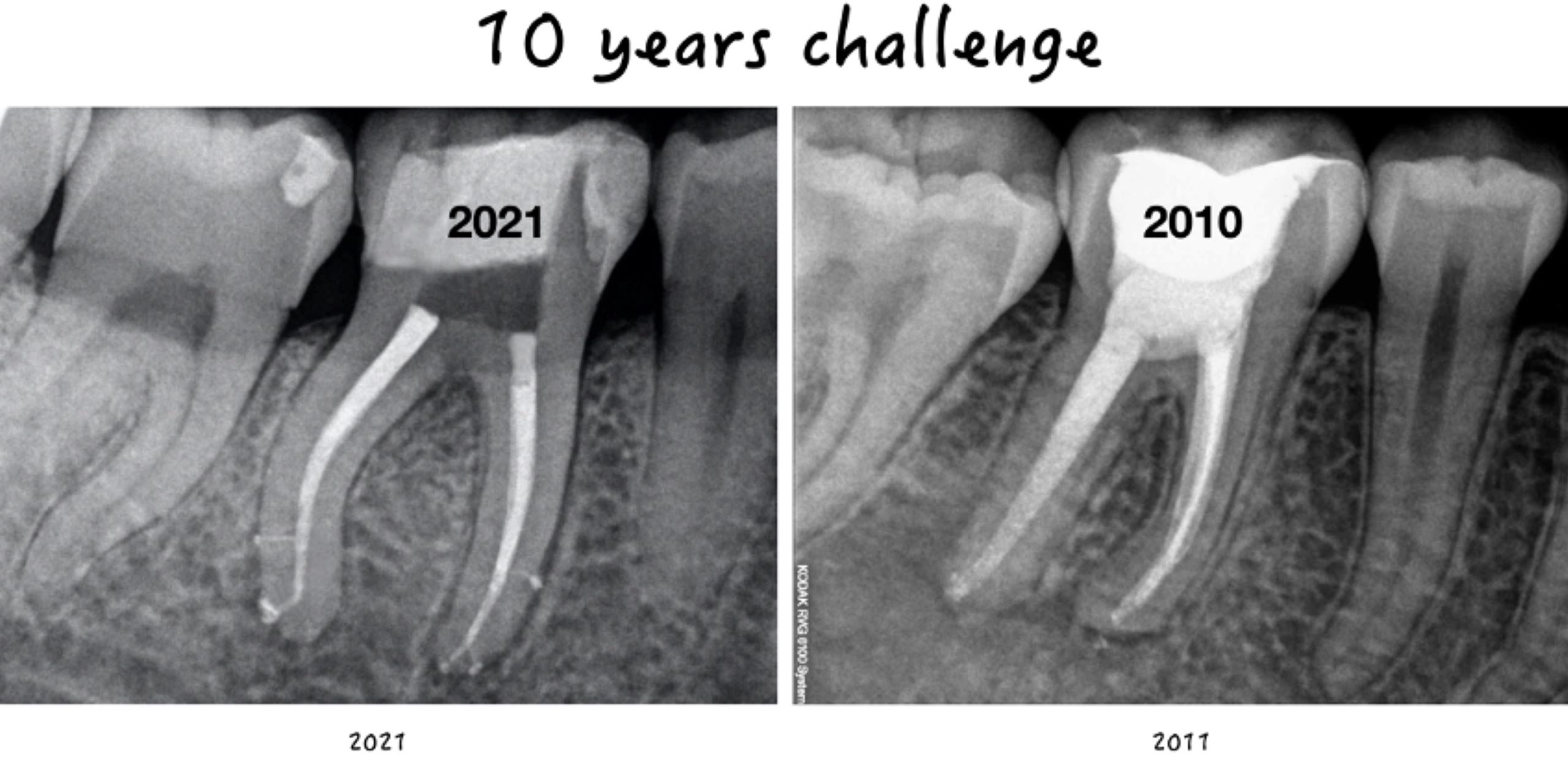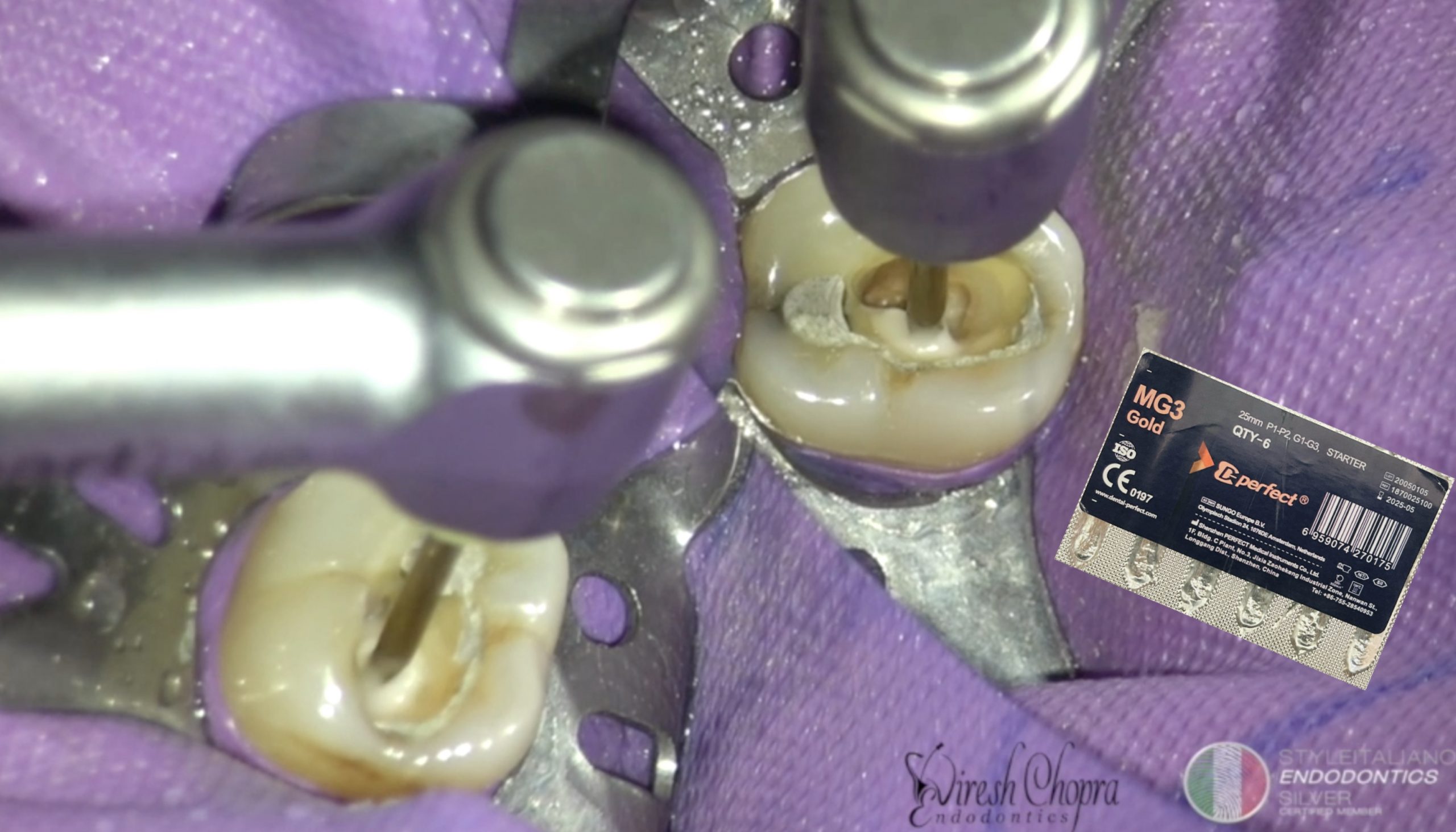
Zoning Technique in Endodontics
23/04/2024
Fellow
Warning: Undefined variable $post in /var/www/vhosts/styleitaliano-endodontics.org/endodontics.styleitaliano.org/wp-content/plugins/oxygen/component-framework/components/classes/code-block.class.php(133) : eval()'d code on line 2
Warning: Attempt to read property "ID" on null in /var/www/vhosts/styleitaliano-endodontics.org/endodontics.styleitaliano.org/wp-content/plugins/oxygen/component-framework/components/classes/code-block.class.php(133) : eval()'d code on line 2
The Zoning Technique is an innovative approach in endodontics that aims to optimize root canal treatment by dividing the root canal system into distinct zones and applying specific instruments and techniques tailored to each zone's unique characteristics. This technique enhances procedural efficiency, increases treatment precision, and improves the overall success rates of endodontic therapy. In this article, we will delve into the principles, applications, and benefits of the Zoning Technique in endodontic practice.
Principles of the Zoning Technique
The Zoning Technique involves categorizing the root canal into three main zones based on the anatomical features and complexities present in each zone:
Coronal Zone: This zone encompasses the coronal third of the root canal and is characterized by wider and less curved anatomy. Instruments with larger diameters are used in this zone to efficiently remove pulp tissue and facilitate access to the canal orifice.
Middle Zone: The middle third of the root canal typically exhibits moderate curvature and diameter. Flexible rotary or reciprocating files are employed in this zone to negotiate the curvature and maintain the original canal path.
Apical Zone: The apical third of the root canal is the most challenging due to its intricate anatomy, including accessory canals and isthmuses. Small, flexible instruments are utilized in this zone to shape the apical constriction accurately and maintain the natural canal morphology.
By addressing these zones individually with zone-specific instrumentation and protocols, the Zoning Technique facilitates thorough cleaning, shaping, and obturation of the root canal system while minimizing procedural errors and complications.
Application of the Zoning Technique
The Zoning Technique can be successfully applied in various clinical scenarios, including cases with curved canals, calcifications, and anatomical variations. Some key applications of the Zoning Technique in endodontics include:
Complex Root Canal Morphologies: The Zoning Technique allows clinicians to navigate complex canal anatomies by segmenting the root canal into manageable zones, making it easier to address specific challenges in each zone.
Retreatment Procedures: When dealing with retreatment cases, the Zoning Technique enables clinicians to systematically manage canal obstructions, remove obturationmaterials, and ensure thorough cleaning of the root canal system.
Calcified Canals: The Zoning Technique provides a structured approach to negotiating calcified canals by gradually progressing from the coronal to apical zones with appropriate instruments and irrigation methods, improving treatment outcomes in challenging cases.
Benefits of the Zoning Technique
Enhanced Precision: Targeting each zone individually allows for precise management of specific anatomical features, resulting in more accurate root canal preparation and shaping.
Reduced Procedural Errors: By following a systematic approach and using zone-specific instruments, the Zoning Technique minimizes procedural errors such as ledging, transportation, and perforations.
Improved Treatment Outcomes: The Zoning Technique promotes thorough cleaning, shaping, and obturation of the root canal system, leading to a higher success rate in endodontic treatments and better long-term prognosis for the tooth.

Fig. 1
Preoperative radiograph with evidence of periapical and furcation pathosis, short obturation , calsified M canals

Fig. 2
Four independent canals were located, each leading to its own apical foramen. Gutta-percha was retrieved from the canals with the help of Re-treat rotary file system . During treatment, a depression was felt in the pulp chamber floor toward the center of the mesial root canal entrance. The lip of dentin covering this area was removed with a long shank round bur. The distal root showed two canals with one independent foramina, which were connected at the cervical third and had a common orifice in the pulp chamber floor.

Fig. 3
The working length was determined radiographically and corroborated with an apex locator after using Zoning Technique with D-finder size 10 -25mm
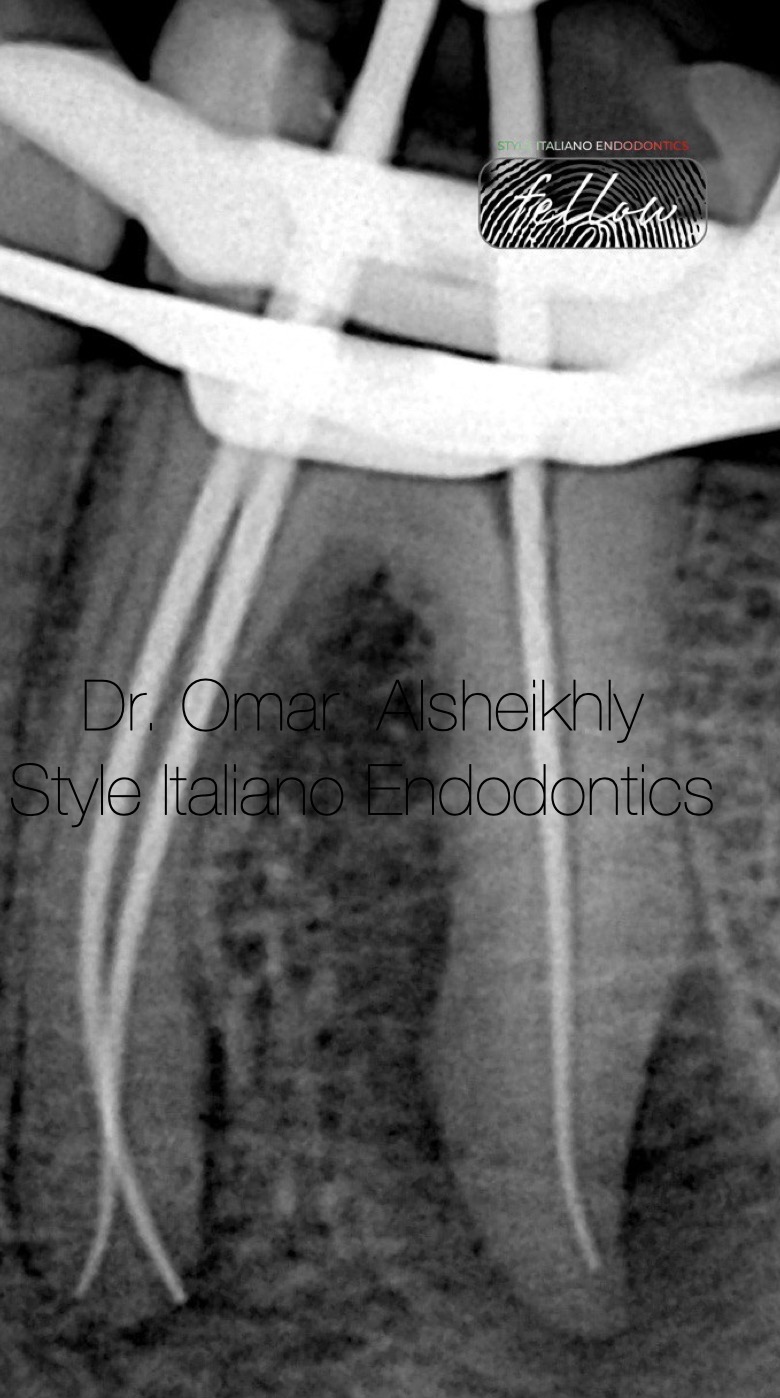
Fig. 4
Last working length determined with the master finisher file
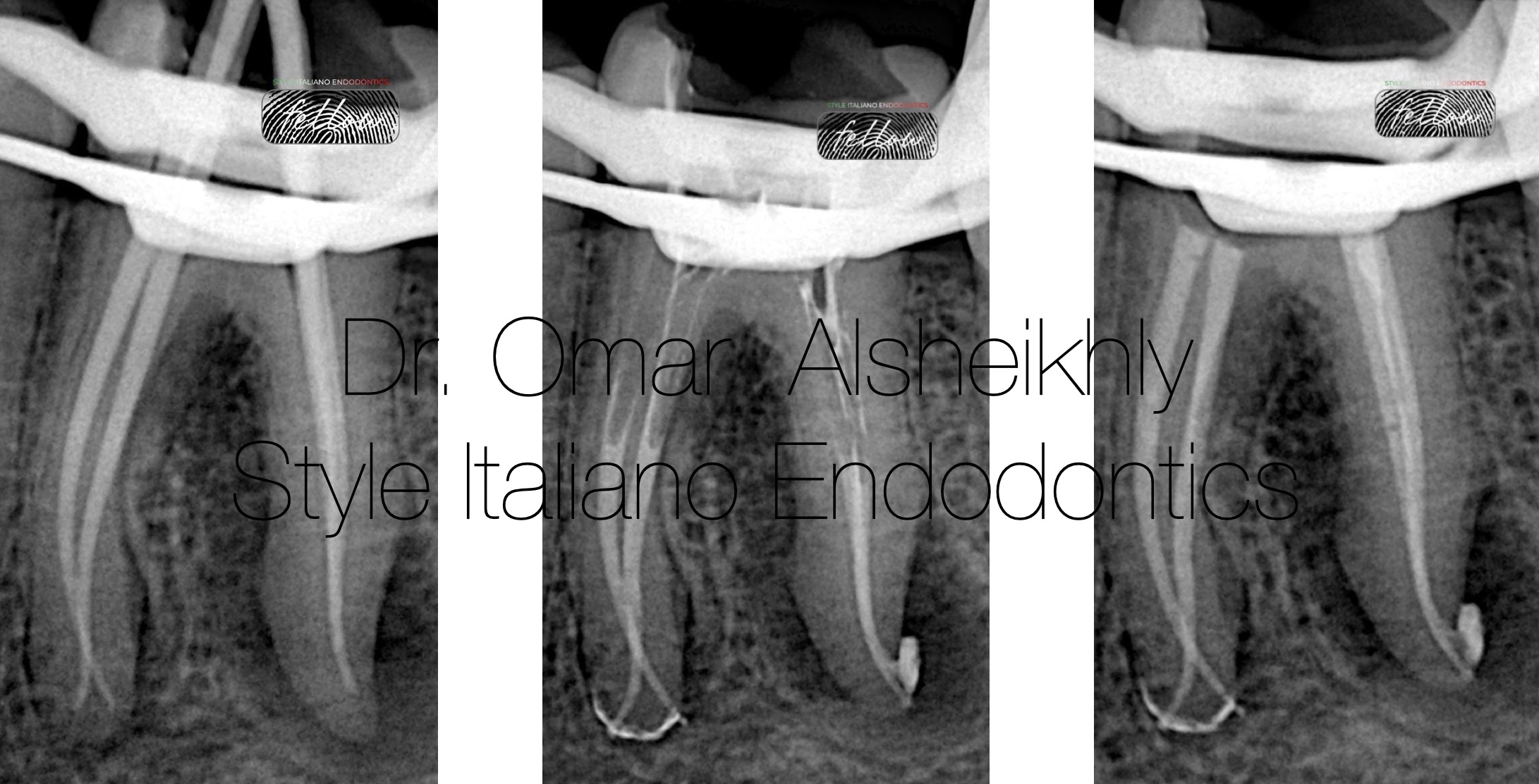
Fig. 5
Two weeks later, the patient returned for obturation of the canal. The tooth was asymptomatic, and following final irrigation with NaOCL 5.25% the canals were dried with paper points and deemed ready for obturation. A radiograph was taken to confirm the extension of the master cone to the estimated working length (figure 5.a). The tooth was then obturated with a worm vertical condensation technique using BC sealer (figure 5.b.c)
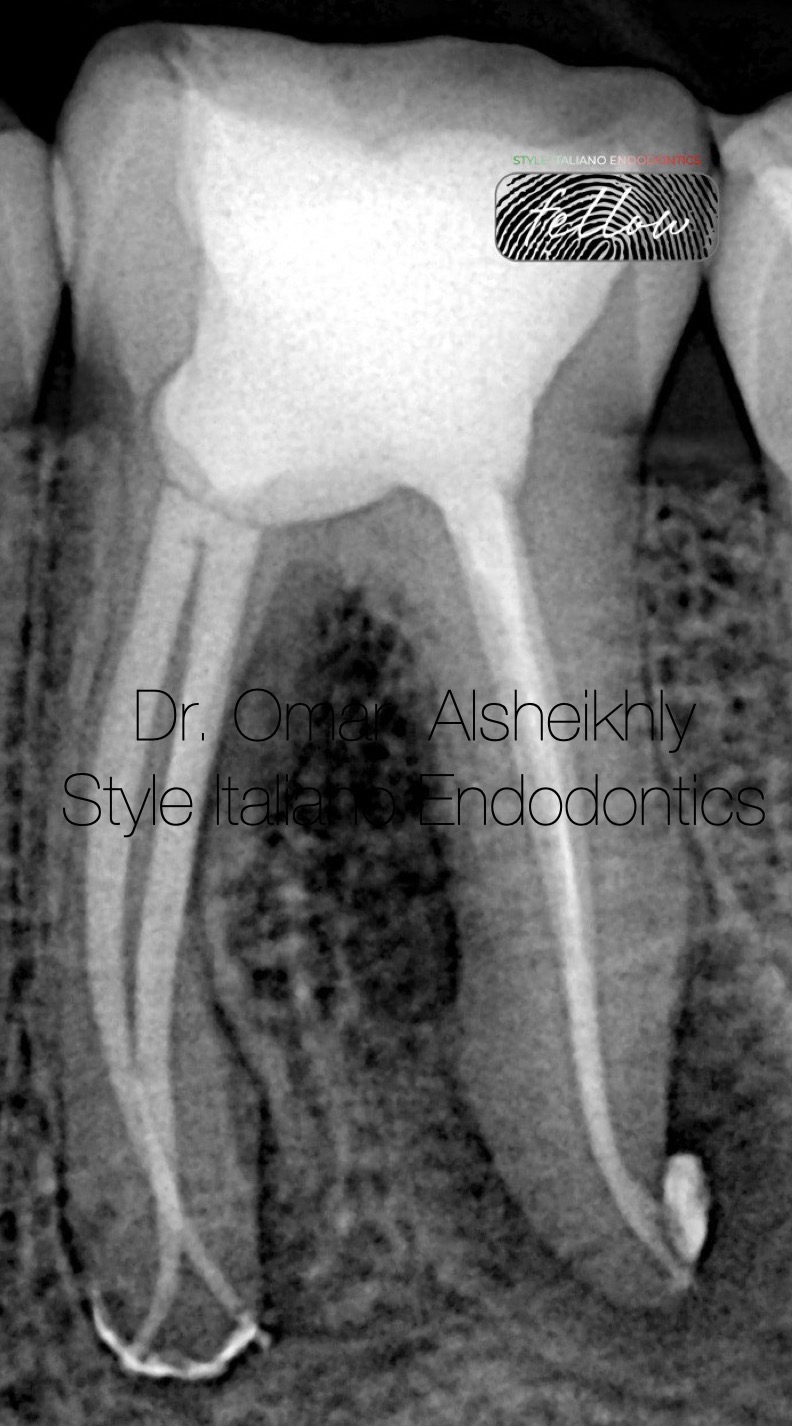
Fig. 6
Post-oparative radiograph showing the S curve in ML canal

Fig. 7
About Dr. Omar Alsheikhly
Bachelor of dental surgery (BDS) Ivan Horbachevsky Ternopil State Medical University UKRAIN 2011-2016
Awarded the certificate of equivalency for the diploma Faculty of Dentistry \University of Baghdad IRAQ 2019
MSc master in advanced Endodontics University of Siena \ ITALY 2021\2023
SIE FELLOW MEMBER
Conclusions
The Zoning Technique represents a sophisticated and effective strategy in endodontics that optimizes root canal treatment by dividing the root canal system into distinct zones and addressing each zone's unique challenges with specific instruments and techniques. By incorporating the Zoning Technique into clinical practice, endodontists can achieve superior treatment outcomes, reduce the likelihood of procedural mishaps, and enhance the overall quality of endodontic therapy. Continued research and education in the field of endodontics are vital to further explore the potential and efficacy of the Zoning Technique in improving patient care and advancing the practice of root canal treatment.
Bibliography
Berutti E, Cantatore G, Castellucci A (2011) Use of nickel–titanium rotary PathFile to create the glide path: comparison with manual preflaring in simulated root canals. J Endod 37: 1-6.
Berutti E, Chiandussi G, Paolino DS, Scotti N, Cantatore G, Castellucci A (2012) Canal shaping with WaveOne Primary reciprocating files and ProTaper system: a comparative study. J Endod 38: 505-509.
Berutti E, Chiandussi G, Paolino DS, Scotti N, Cantatore G, Castellucci A (2011) shaping with WaveOne Primary reciprocating files and ProTaper systCanalem: a comparative study. J Endod 37: 743-747.
Berutti E, Chiandussi G, Gaviglio I, Ibba A (2011) Comparative analysis of torsional and bending stresses in two mathematical models of nickel–titanium rotary instruments: ProTaper versus WaveOne. J Endod 37: 1395-1399.


